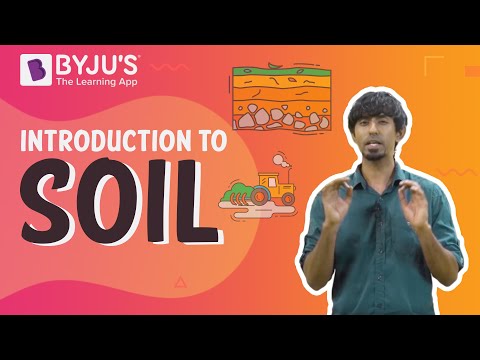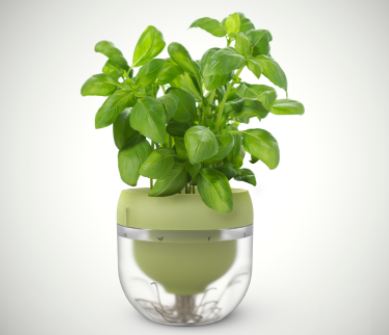According to the CBSE Syllabus 2023-24, this chapter has been removed from NCERT Class 7 Science textbook.
What is Soil?
Soil
- It forms the upper surface of the earth where life thrives and is the base of all agriculture.
- Due to the physical and chemical weathering of rocks, it comprises of minerals and gravel, microbes, insects, decaying organic matter (humus), nutrients, water, and air.
- There are different types of soil differing based on the geological composition, climate, and rainfall the area receives and is regularly removed and formed by the activities (natural or human)
For more information on Soil, watch the below videos


To know more about Soil, visit here.
Are There Levels in Soil?
Humus
Humus is the organic component present in the soil formed by the decomposition of plant materials by microorganisms present in the soil. Humus is the rotting dead matter in the soil.
Weathering
Weathering is the breaking down or dissolving of rocks and minerals on Earth’s surface. Water, ice, acids, salt, plants, animals, and changes in temperature are all agents of weathering.
Soil Profile
The soil profile is a composition of different layers of soil in a vertical section.
Each layer is different from others because of its texture, colour, depth and chemical composition.
To know more about Soil Profile, visit here.
Horizon
Each layer in a soil profile is defined as a horizon.
1. A- horizon or topsoil is the soft, porous layer which can absorb and hold more water.
2. B-horizon, or middle layer, is the more compact and harder layer.
3. C-horizon is the third layer made up of small rocks.
4. Bedrock is the fourth and hardest layer.
Soil erosion
The process of removal of land by water, wind or ice is known as erosion. The process of removal of soil by wind and water in the absence of plants is called soil erosion.
Methods to prevent soil erosion are:
- Deforestation should be avoided.
- Plant more trees.
To know more about Soil Erosion, visit here.
What are the Types of Soil?
Sandy Soil
The soil is classified on the basis of the proportion of particles of various sizes. Sand tends to have large particles, and the particles are solid and have no pockets where water and nutrients can hold them. Because of this, water and nutrients tend to run out, and because sandy soil lacks both water and nutrients, many plants have a difficult time surviving in this kind of soil.
Clayey Soil
The clayey soil consists of a larger proportion of finer particles. Clay soils contain more than 30 percent fine clay particles. Clays swell and shrink as they wet and dry, effectively cultivating themselves.
Loamy Soil
- When the proportion of larger and finer particles is equal, then that type of soil is called loamy soil.
- Loamy soil is a mixture of silt, clay and sand which is the best topsoil for growing plants.
To know more about different types of soils, visit here.
Percolation Rate
Percolation
Percolation is the process of filtering liquid while passing through a filter. Rainfall seeps underground through percolation, where water travels downwards through the tiny spaces between rocks and soil particles. The water eventually saturates the underlying rock, much like water fills the tiny holes of a sponge. This helps to replenish aquifers under the ground.
Percolation Rate of soil
- The percolation rate of the soil is used to determine the absorption rate of the soil.
- The rate of percolation is the ratio of the amount of water in millimetres to the percolation time in minutes.
Percolation rate (mL/ min) = amount of water (mL)/percolation time (min).
Moisture and Absorption
Moisture in Soil
- Moisture is soil is the amount of water present in the soil.
- Moisture in the soil can be removed by setting up the following experiment.
Take soil samples and put them in a boiling tube and heat it so that we can observe water drops in the mouth of the test tube. This way, we can remove moisture in the soil.
Absorption of Water by Soil
The amount of water absorbed by the soil when water is poured into the soil is called absorption capacity or absorption of water by soil.
To know more about Water Absorption in Soil, visit here.
Percentage of water absorbed
Percentage of water absorbed by soil = [ Initial weight or initial volume of water absorbed – Final weight or final volume of water absorbed/weight of soil ]×100
Weight of water absorbed by the soil = (u – v) g
The volume of water absorbed by the soil = (u – v) mL
where u is the initial volume of water/initial weight of water v is the final volume of water/final weight of water absorbed by the soil.
Crops
Crops and their Relation to Types of Soil
Depending on the climatic factors and components of the soil, different types of crops are grown in different regions.
- Clayey soil and loamy soil – Good for growing cereals like wheat and gram.
- Clayey soil, soils rich in organic matter and soils with good capacity to retain water – Good for growing paddy and wheat.
- Loamy soil, soils with high draining capacity and can hold plenty of water – Good for growing Lentils (masoor) and other pulses, cotton.
To know more about Soil and Crops, visit here.
Hydroponic plants
Plants do not need soil to grow instead, these plants need water to grow. These types of plants are known as hydroponic plants.

To know more about Hydroponic plants, visit here.
Frequently Asked Questions on CBSE Class 7 Science Notes Chapter 9 Soil
What is the percolation rate?
Percolation is the movement of water through soil, and the percolation rate is the speed at which that movement occurs.
What are some of the properties of humus?
1. Improves fertility of soil 2. Contains 60% of carbon 3. Contains additional essential nutrients
How can we control soil erosion?
1. Plant more trees 2. Mulching 3. Maintain a perennial plant cover
Comments